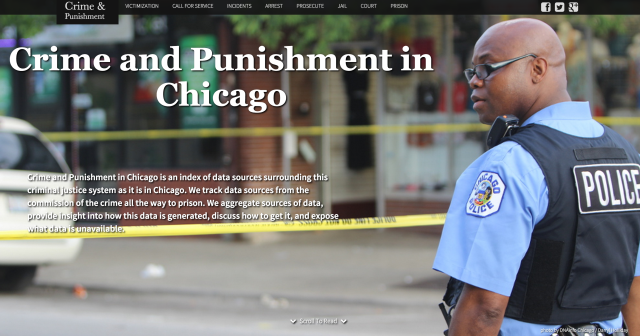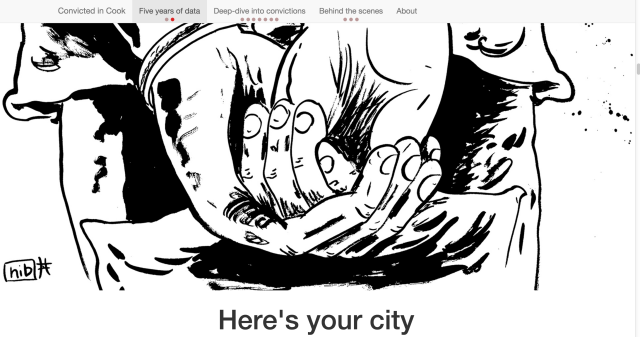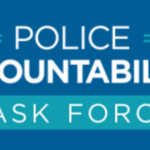I have worked worked with a lot of crime data from a lot of cities, going back almost 10 years. I’ve worked with hundreds of colleagues to get more crime data published, make apps based on crime data, and to improve standards around the publication of crime data.
Today’s story in The Guardian, (The disappeared: Chicago police detain Americans at abuse-laden ‘black site’) is a blockbuster piece of journalism that signals a very important day for those of us who care about this work. Here’s an extended snip:
The Chicago police department operates an off-the-books interrogation compound, rendering Americans unable to be found by family or attorneys while locked inside what lawyers say is the domestic equivalent of a CIA black site.
The facility, a nondescript warehouse on Chicago’s west side known as Homan Square, has long been the scene of secretive work by special police units. Interviews with local attorneys and one protester who spent the better part of a day shackled in Homan Square describe operations that deny access to basic constitutional rights.
Alleged police practices at Homan Square, according to those familiar with the facility who spoke out to the Guardian after its investigation into Chicago police abuse, include:
- Keeping arrestees out of official booking databases
- Beating by police, resulting in head wounds.
- Shackling for prolonged periods.
- Denying attorneys access to the “secure” facility.
- Holding people without legal counsel for between 12 and 24 hours, including people as young as 15.
A day like this makes me proud of what we do and the way we do it.
At Smart Chicago, we’ve never made a crime report app. In our Justice program, we focus on access to data (not just display), youth-led tech (rather than data-driven apps), and websites that delve into published and unpublished datasets about incarceration (so that we can go beyond the data handed down and try to see what’s still left behind).
I’m particularly proud of two justice-centered technology projects we’ve published over the last year, with our partners the Chicago Justice Project and FreeGeek Chicago’s Supreme Chi-Town Coding Crew. I think these projects are exemplary apps in a post-Homan Square civic tech world.
They don’t display official crime data. Instead, Crime and Punishment in Chicago focuses (like the Guardian story) on what *isn’t* published.

Here’s our description:
All over Chicago, every day, in every corner of our oblong city, people commit crimes. This project is an index of the data that documents these crimes and what, if any, response there is from the criminal justice system.
The documentation is immense. Some is published. Much of it is not. Our goal is to create a flat, simple guide to what is known and what is not.
We haven’t waited for data to hit the data portal— we work with hard-nosed people like Tracy Siska who get a hold of never-before-published conviction data through FOIA. This data is displayed in Convicted in Cook.

Here’s our description:
This project is an analysis of five years of Cook County conviction data. The information was received by Tracy Siska of the Chicago Justice Project from the Office of the Chief Judge of the Circuit Court of Cook County through a request to the chief judge. We’ve posted a copy of that request here.
Each year, tens of thousands of people stand in front of judges at the Cook County Circuit Court, the largest unified court system in the country. Their offenses range from marijuana possession charges that result in low-level misdemeanor convictions to multiple murders that put people behind bars for life.
When a violent crime is picked up by the news media, it’s often sensationalised so that every minor detail is brought into the public purview. Meanwhile, the vast majority of convictions – mostly drug related – are given little notice.
This project will attempt to answer several questions regarding convictions in Cook County. Upon first receiving the data, it became apparent that the data was messy and incomplete.
Two projects that use technology and data to zero in on justice, not tech projects that zero in on crime data. As we’ve seen in today’s news, published an ocean away from the corner of Homan and Fillmore, the only way past messy and incomplete is more work. So: onward.






